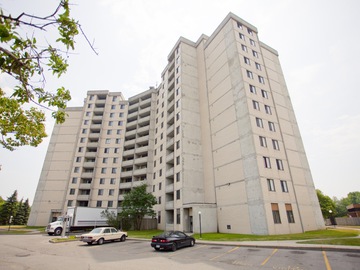Estimated number of cars that a
TTC vehicle replaces during a typical morning rush hour:
- Bus: 45
- CLRV streetcar: 65
- ALRV streetcar: 95
- SRT train (4 cars): 195
- Subway train (6 cars): 890
- Toronto Rocket train (6 cars): 960
Guess who benefits from that the most?
Information on TTC lines and ridership is readily available Glen, just take a look. There's several bus routes in the old city of Toronto that have ridership levels equivalent or higher to those of the Sheppard subway at operating costs orders of magnitude lower. Most TTC routes pay for themselves, and routes in the old city - which is grossly under-served by transit - usually produce revenue for the system. Still, the TTC is arguably more important to people in the periphery of the old city and the old suburbs than to downtowners. Well over 50% of downtown residents don't drive or use the TTC to commute - cycling or walking instead.
The TTC currently pays 70% of its operating costs, though. It is a very efficiently run system all in all, and a pretty neat service. We run empty buses in Rosedale and Etobicoke more as a social service than anything, but there's nothing wrong with that.
I for one, as most people who live downtown, pay an exorbitant amount of property taxes per metre squared, and I rarely if ever use the TTC or our extensive suburban road system. If you look at which parts of the city contribute the most to our municipal budget, it's the parts of the city that have a combination of higher commercial and residential density and higher property values.
Finally, let me point out that our transportation budget is as low as it is because we are doing a horrible job at servicing our streets. The streets I ride on every day downtown are worse than any others I've had to put up with - and I've lived in third world countries! Suburban folk get hundreds of times more metres of asphault per person than downtowners do, and yet their streets are in the same or better shape... what does that tell you?







